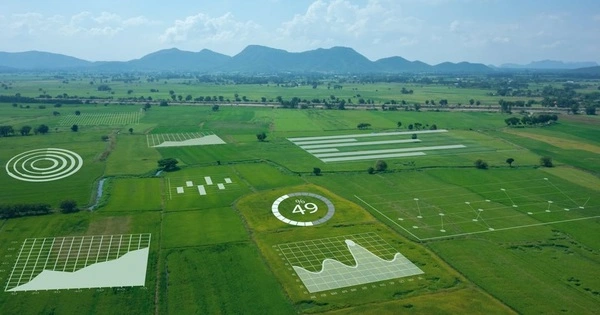Modern farms and agricultural operations are vastly different from those of a few decades ago, owing to technological advancements such as sensors, devices, machines, and information technology. Robots, temperature and moisture sensors, aerial images, and GPS technology are all commonly used in agriculture today. Precision agriculture and robotic systems, as well as advanced devices, enable businesses to be more profitable, efficient, safe, and environmentally friendly.
The widespread use of smart technologies is increasing global agricultural output, but international researchers warn that this digital-age phenomenon may yield a crop of a different kind: cybersecurity attacks.
A new article in the open access journal Sensors highlights the risks associated with complex IT and math modeling at King Abdulaziz University in Saudi Arabia, Aix-Marseille University in France, and Flinders University in South Australia.
As evidenced by cyber-attacks on a US watering system, a meatpacking company, wool broker software, and an Australian beverage company, digital agriculture is not immune to cyber-attacks. Side-channel attack refers to the extraction of cryptographic or sensitive information from the operation of physical hardware.
Professor David Glynn
“Smart sensors and systems are used to monitor crops, plants, the environment, water, soil moisture, and diseases,” says lead author Professor Abel Alahmadi of King Abdulaziz University. “The transition to digital agriculture would improve the quality and quantity of food for the world’s growing population, which is expected to reach 10.9 billion by 2100.”
Researchers warn that advances in production, genetic modification for drought-resistant crops, and other technologies are vulnerable to cyber-attack, particularly if the ag-tech sector does not take adequate precautions like other corporate or defense sectors.
According to Dr. Saeed Rehman of Flinders University, the rise of internet connectivity and smart low-power devices has facilitated the digitalization of many labor-intensive food production jobs, including modern techniques for accurate irrigation, soil, and crop monitoring using drone surveillance.
“However,” says Dr. Rehman, an expert in cybersecurity and networking, “we should not overlook security threats and vulnerabilities to digital agriculture, particularly possible side-channel attacks specific to ag-tech applications.”

“As evidenced by cyber-attacks on a US watering system, a meatpacking company, wool broker software, and an Australian beverage company, digital agriculture is not immune to cyber-attacks. Side-channel attack refers to the extraction of cryptographic or sensitive information from the operation of physical hardware” Professor David Glynn, a Flinders University co-author, adds. “These attacks could be easily carried out with physical access to devices, which has not been explicitly investigated by the cybersecurity community.”
In modern agriculture, innovation is more important than ever. The industry as a whole is facing enormous challenges, including rising supply costs, a labor shortage, and changes in consumer preferences for transparency and sustainability. Agriculture corporations are increasingly aware that solutions to these problems are required.
Agriculture technology has seen a massive increase in investment over the last ten years, with $6.7 billion invested in the last five years and $1.9 billion invested in the last year alone. Indoor vertical farming, automation and robotics, livestock technology, modern greenhouse practices, precision agriculture and artificial intelligence, and blockchain have all seen significant technological advancements.
Technological advancements ranging from robotics and drones to computer vision software have completely transformed modern agriculture. The primary goal of farm automation technology is to automate simple, routine tasks. Farms commonly use the following major technologies: harvest automation, autonomous tractors, seeding and weeding, and drones. Farm automation technology addresses major issues such as global population growth, labor shortages on farms, and shifting consumer preferences.
The researchers advise investing in precautions and raising awareness about the vulnerabilities of digital agriculture to cyber-attack, with a focus on the potential serious consequences for the general population in terms of food supply, labor, and other costs.
















